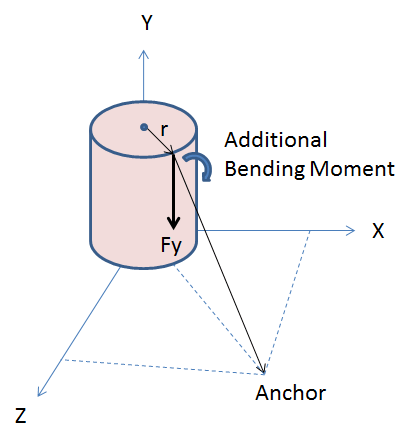Quick Pole Verification
Introduction to Guyed Structure Response
The focus of these tests are to ensure that the combined models of both the pole and the guying components work together in a consistent way to provide an accurate overall response. Individually the models may behave as expected, but when combined additional consistency constraints are demanded in order for them to work together properly.
 The amount that the pole or the guying components are permitted to deflect for a given amount of load is a critical determining factor for how much load each will carry. With respect to the law of diminishing returns, thicker poles or thicker guy wires will generally attract higher loads due to the fact that they are more "stiff" and have more resistance to deflection and stretch. This is the reason that the entire structure (poles plus guying components) must be solved as one unit and not independently.
The amount that the pole or the guying components are permitted to deflect for a given amount of load is a critical determining factor for how much load each will carry. With respect to the law of diminishing returns, thicker poles or thicker guy wires will generally attract higher loads due to the fact that they are more "stiff" and have more resistance to deflection and stretch. This is the reason that the entire structure (poles plus guying components) must be solved as one unit and not independently.
Another important aspect to consider is that all guying must be applied to the SIDE of the pole. It is not possible to actually or effectively guy at the very center of the pole. The vertical load applied to the side of the pole from guying creates bending moments, which are additional loads which must be considered. When more than one guying component is attached to the pole in the same direction, these guy-created bending moments can affect the sharing of the loads between them.
To fairly evaluate any software tool, the main aspect to consider in the testing is whether the loads are accurately shared between the pole and the guying. This includes along the length of the pole and moments in addition to just forces. While the specific tests should evaluate different heights of both load and guying attachments, multiple guying scenarios should also be included.


